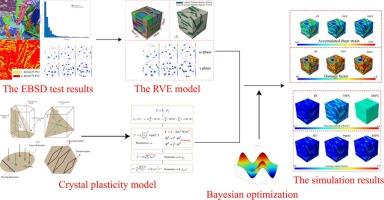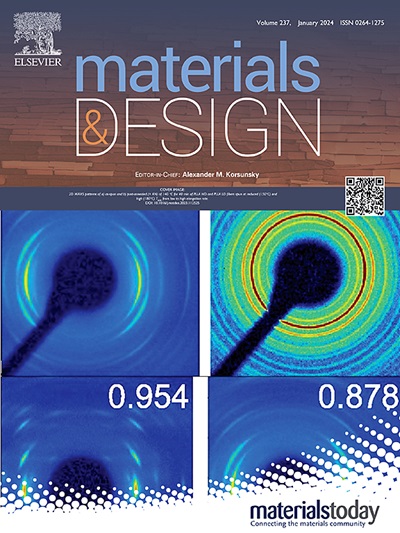Exploring the brittle-to-ductile transition and microstructural responses of γ−TiAl alloy with a crystal plasticity model incorporating dislocation and twinning
IF 7.6
2区 材料科学
Q1 MATERIALS SCIENCE, MULTIDISCIPLINARY
引用次数: 0
Abstract
−TiAl alloy, with its high specific strength and creep resistance, is ideal for aerospace engines and gas turbines, but its brittleness poses significant manufacturing and processing challenges. To address these issues, this study employs a crystal plasticity finite element method incorporating dislocation and twinning to analyze the brittle-to-ductile transition behavior of −TiAl alloy at different temperatures. Additionally, the Bayesian optimization methods are employed to efficiently and accurately obtain parameters related to numerical calculations of crystal plasticity. The results indicate that at room temperature, the high activation resistance of the slip systems in the α2 phase leads to limited slip activity, resulting in poor plasticity. However, at 750 °C and 850 °C, the strength of the slip systems decreases significantly, allowing more α2 phase lamellae in the γ-TiAl alloy to undergo greater plastic deformation. This enhancement in the plastic deformation capacity of the α2phase lamellae reduce the overall deformation incompatibility in the TiAl alloy, thereby improving the overall ductile of the γ-TiAl alloy.

用包含位错和孪晶的晶体塑性模型探索γ-TiAl 合金的脆到韧性转变和微结构响应
γ-TiAl合金具有高比强度和抗蠕变性,是航空航天发动机和燃气轮机的理想材料,但其脆性给制造和加工带来了巨大挑战。为解决这些问题,本研究采用晶体塑性有限元方法,结合位错和孪晶分析γ-TiAl 合金在不同温度下的脆性到韧性转变行为。此外,还采用了贝叶斯优化方法,以高效、准确地获得与晶体塑性数值计算相关的参数。结果表明,在室温下,α2 相中滑移体系的高活化阻力导致滑移活性有限,从而导致塑性较差。然而,在 750 ℃ 和 850 ℃ 时,滑移体系的强度显著降低,使得 γ-TiAl 合金中更多的α2 相薄片发生更大的塑性变形。α2相薄片塑性变形能力的增强降低了钛铝合金的整体变形不相容性,从而提高了γ-钛铝合金的整体延展性。
本文章由计算机程序翻译,如有差异,请以英文原文为准。
求助全文
约1分钟内获得全文
求助全文
来源期刊

Materials & Design
Engineering-Mechanical Engineering
CiteScore
14.30
自引率
7.10%
发文量
1028
审稿时长
85 days
期刊介绍:
Materials and Design is a multi-disciplinary journal that publishes original research reports, review articles, and express communications. The journal focuses on studying the structure and properties of inorganic and organic materials, advancements in synthesis, processing, characterization, and testing, the design of materials and engineering systems, and their applications in technology. It aims to bring together various aspects of materials science, engineering, physics, and chemistry.
The journal explores themes ranging from materials to design and aims to reveal the connections between natural and artificial materials, as well as experiment and modeling. Manuscripts submitted to Materials and Design should contain elements of discovery and surprise, as they often contribute new insights into the architecture and function of matter.
 求助内容:
求助内容: 应助结果提醒方式:
应助结果提醒方式:


